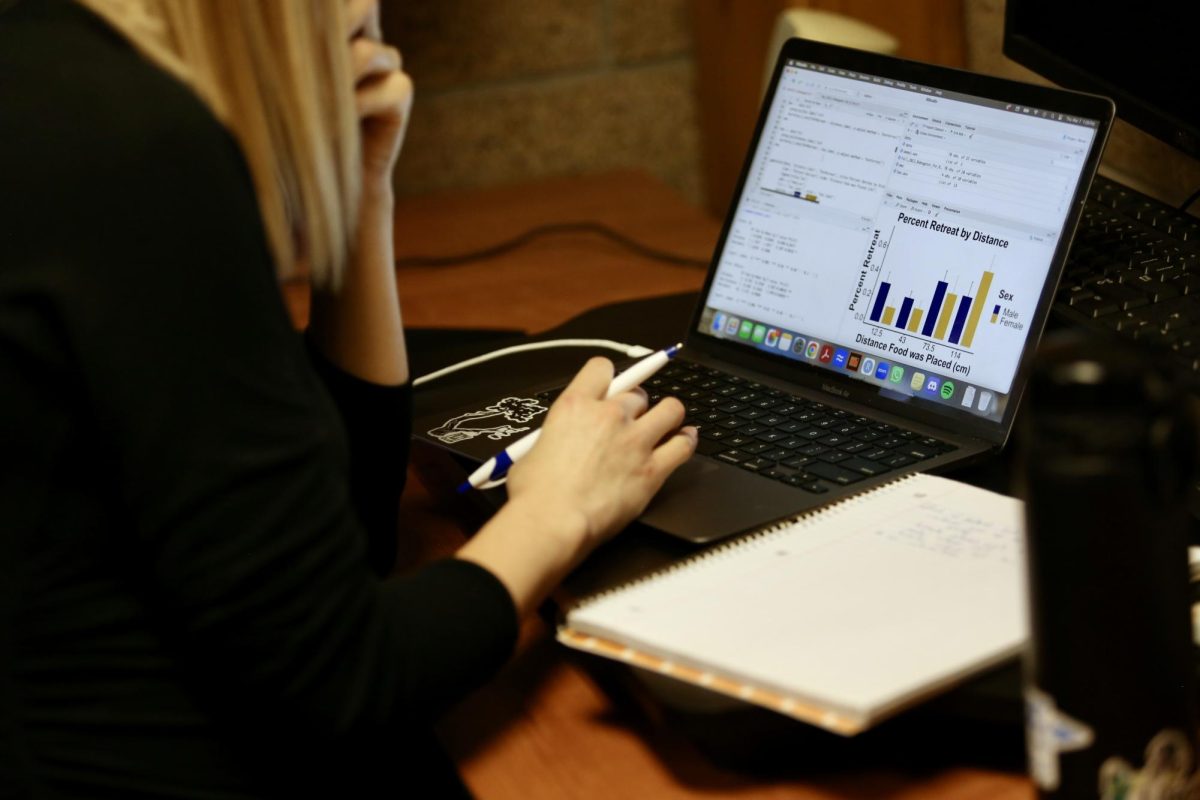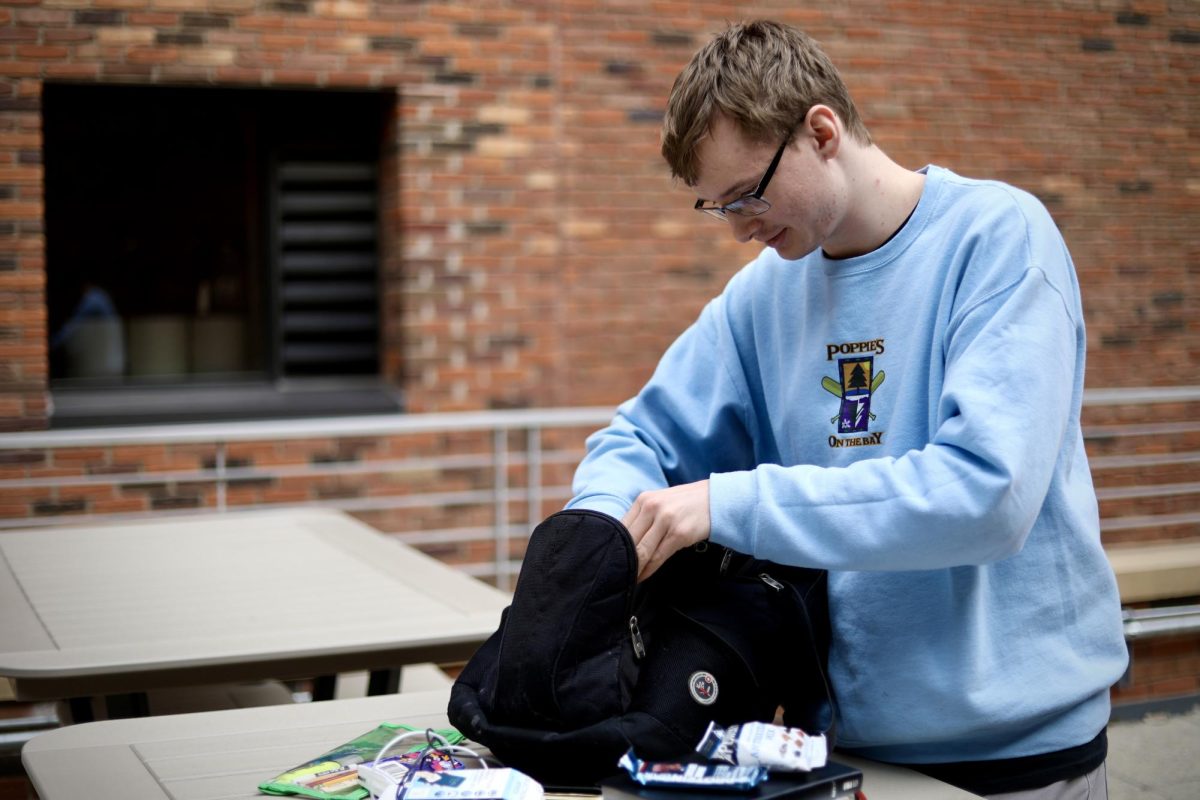A freshman engineering major hears music from a four-month project for the first time.
By Sarah Bakeman
Gerald Pardun hunched over the rough-cut lumber desk he made in a shop class two years ago. With his knees pressed against the underside to stabilize its uneven legs, the surface still couldn’t hold a pencil without it rolling off. The yellowy overhead bulb had burned out, leaving just lamplight in his room. Regardless, with a chisel in one hand and a knife in the other, Pardun worked on his latest project: a violin.
Before the freshman mechanical engineering major from Danbury, Wisconsin had even begun gathering wood for the project, Pardun remembered traveling down a gravelly Danbury road that demanded four-wheel drive. At the end of it sat the house of family friends Jim and John Halmond. It was a shabby, three-story building with rollaway foam pads instead of beds and no running water.
This house was where Pardun realized an instrument is the most beautiful thing that can be built.
The elderly brothers’ entire home, including the bathroom, was filled with racks of handbuilt guitars. Some with 20 types of wood. Some with intricate designs, such as woodpeckers, carved into the front. Some wrapped in towels on the ground, left unvarnished in the excitement of newer projects.
“I’ve always admired what they do and the things they’ve created,” Pardun said. “They’re kind of crazy, but they’re geniuses.”
With the Halmond brothers, a love for western swing and an unending pandemic in mind, Pardun planned his project. He’d scavenged tulipwood from his family’s property in Danbury. He’d figured out how to use a bending iron to mold the instrument. He’d spent hundreds of hours skimming books borrowed from the Halmonds and watching YouTube videos.
As winter came to a close and the spring of 2021 began, Pardun finished his senior year of high school online. School days meant spending six hours after class on the violin, often until midnight. On the weekends, Pardun worked 12-hour days at the wobbly desk.

“It was an obsession, and it was not probably the best thing for me to do,” he said. “I felt like it stopped being wanting to build this, and it started becoming ‘I need to prove to myself that I can do this.’”
With the scroll carved, sound-holes cut and measurements taken and adjusted, every addition to the instrument risked ruining work done prior. Rags and super glue hastily repaired burn marks, bloodstains and chips, but Pardun can still point to a number of slip-ups on the final product.
“It definitely stays with you… Every mistake is a permanent thing that, even if you can hide it really well, is still there. It adds character, but it also still feels like you screwed something up that you had worked so hard for.”
Gerald Pardun
Then it was time for the purfling. A thin channel needed to be carved around the perimeter of the top and bottom plates before being filled with alternating ebony, maple, ebony to create dark and light lines. With just his knife and handmade chisel, this process alone took Pardun four 12-hour days, strained eyes and the hum of Breaking Bad playing in the background.
“I don’t like to use power tools a lot because I feel like it’s too much too fast, and if I make a mistake, the effects of that mistake are way too severe,” Pardun said. “There are a lot of shortcuts I could’ve taken that I did not just because of my anxiety over power tools.”
With a Dremel power tool, this carving could have taken as little as 20 minutes. In many cases, these black and white lines are just painted on, but Pardun felt cutting that corner would be an injustice to his prior work.
By March, the pieces had been carved and varnish had smoothed the wood’s remaining pores. With a completed project, Pardun applied for and received a scholarship worth about $1,000.
“If I don’t count the money I put in, I made about $3 an hour,” Pardun said. “It’s not great, but for a hobby, it’s wonderful to get paid for something I was going to do anyways.”
As Pardun settled into Getsch Hall in September, his mother returned to Bethel’s campus to deliver a few afterthoughts. Among the load were extra flannels, a stovetop coffee percolator and his violin. Without a bow or even the knowledge of how to play it, Pardun placed the violin in his bottom dresser drawer.
After a failed attempt to tune the violin in the Getsch common room, Pardun took his creation to Adjunct Professor of Violin Angela Hanson, who opened her case to grab a bow, also revealing her cherry red violin inscribed with “1790,” the year it was built.
As Hanson tuned the pegs of Pardun’s yellow tulipwood violin, she noted the “GGP 2020,” his initials and the violin’s year of creation, carved into the inside.
Mozart’s “Concerto No. 5” vibrated through the strings Pardun had looped as Hanson ran her bow back and forth. For Pardun, the song sounded like an end to months of his life spent in a swivel chair at a shop-class desk.
“Hearing it is the fruit of labor and sacrifice,” Pardun said. “I really changed as a person. I’m not sure if it was in a positive way or a negative way, but I changed, and I am the way I am now.”

![Nelson Hall Resident Director Kendall Engelke Davis looks over to see what Resident Assistant Chloe Smith paints. For her weekly 8 p.m. staff development meeting in Nelson Shack April 16, Engelke Davis held a watercolor event to relieve stress. “It’s a unique opportunity to get to really invest and be in [RAs’] lives,” Engelke Davis said, “which I consider such a privilege.”](http://thebuclarion.com/wp-content/uploads/2024/05/041624_KendallEngelkeDavis_Holland_05-1200x800.jpg)
















